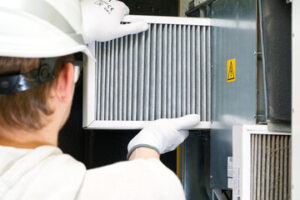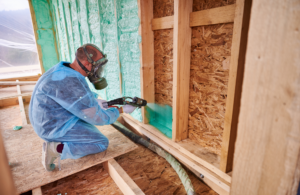If you’re good with your hands and like working on things, you might enjoy a career as an electrician. This is a job that will always be needed, and it pays well.
You can get into this field with a high school diploma and vocational training or through an apprenticeship that lasts up to five years. This is a great way to earn money without accumulating student debt. Contact Electricians Fort Worth now!

The modern world is indebted to electricians, who make it possible to power everything from homes and offices to the tube lights above our heads. Almost all of our modern conveniences depend on electricity, which is why the electrician trade is always in demand and offers high wages. Electricians are able to work in a wide range of settings and can choose from many different specializations within the industry, such as green energy or solar energy.
Electricians are highly skilled tradespeople who install, maintain and repair electrical wiring, fixtures, equipment and controls in a variety of settings. Typically, these include residential homes, commercial buildings and industrial sites. They also perform inspections and testing to ensure that all electrical work meets safety and code standards. Electricians may also work with specialized electrical systems, such as fire alarms or voice-data-video (VDV) wiring.
In addition to installing and maintaining electrical equipment, electricians are often called upon to diagnose and repair problems with household appliances, light fixtures, motors and other devices. In the case of large factories and other industrial facilities, they may need to work with complex electrical systems such as motor control units, programmable logic controllers and more.
Depending on the specialty chosen, electricians can be found all over the country. Many are linepersons who work on electric utility distribution lines at higher voltages, while others focus on the lower voltages used inside buildings and are referred to as wiremen.
Because of the wide range of skills and abilities required to become a qualified electrician, there are plenty of opportunities for career advancement. In some cases, those with extensive experience in the field can become master electricians, which increases their salary significantly. They can also become trainers and coaches for other electricians, which can be an excellent way to further their career prospects.
Another benefit of the electrical trade is that it does not require a four-year university degree, which can cost an exorbitant amount of money. Instead, electricians can train through a number of other programs that are usually much cheaper and offer the chance to earn while learning.
They Make a Decent Income
Electricians have a decent income that allows them to pay their bills, support their families, and still have some money left over to save or spend on things they enjoy. And on top of that, they can make even more money if they pursue additional education and training.
If they want to advance their careers, they can take courses to learn new techniques, which can help them become specialists in their field. That will increase their earning potential and make them a more valuable asset to the company. If they can fix or install something that nobody else can do, for example, they will be able to bring in more money.
The demand for electricians is expected to remain high as construction continues and technology advances. Electricians can also find employment in fields such as industrial electrical work, renewable energy, and automation technology, which can pay more than working on residential or commercial projects.
A skilled electrician can read blueprints that contain technical diagrams of electrical systems and use different types of hand and power tools, such as conduit benders and drills, to install wiring and equipment. They can also troubleshoot problems using ammeters, voltmeters, thermal scanners, and other electrical testing tools.
In addition to earning a good salary, many electricians can also qualify for overtime pay. This is especially true when they are addressing urgent issues or working on time-sensitive projects.
Another way to make more money is by working for themselves as a freelancer or independent contractor. This allows them to cut out the middle man, their boss, and pocket a greater share of their earnings. It is not for everyone, but it can be a great way to get more out of your career.
One of the best ways to improve your earning potential as an electrician is by staying up-to-date on changes in the industry and focusing on areas that are in high demand. For example, if your employer does not have someone to do service calls and you can do that, it will bring in more revenue for the company and boost your earnings.
They Can Start Their Own Business
Electricians who have an entrepreneurial spirit can start their own electrical businesses. The qualifications needed to do this vary by region, but generally include an apprenticeship and passing a licensing exam.
It is also a good idea to study business management and accounting to help with running the day-to-day operations of a business. Once licensed, electricians can start their own electrical contractor business and hire employees to support them.
When starting a new business, electricians should develop a financial plan to estimate startup costs and projected income. This will help them make sound investment decisions. They should also take into account expenses like equipment, tools, vehicles, marketing and other operational costs.
Once established, electricians should focus on advertising and building their client base. They can do this by creating a website and social media accounts to share their work and contact information. Referrals from existing customers are a great way to grow an electrician’s business, so it is important to offer incentives for clients to recommend them to their friends and family.
Another way to grow an electrician’s business is by offering specialized services. For example, some electricians choose to specialize in residential electrical wiring and repairs while others may prefer working on electrical systems during new construction as subcontractors. Some electricians even choose to focus on eco-friendly electrical installations such as electric vehicle home charging stations or photovoltaic systems.
As the industry continues to evolve, it is vital for electricians to keep up with yearly changes in code requirements. This ensures that the business complies with all regulations and avoids costly fines or penalties. In addition, a specialized focus can help an electrician gain competitive advantage by positioning themselves as the expert in their niche.
It is also important for electricians to maintain the proper insurance coverage for their business. This includes general liability, workers’ compensation, and professional liability. They should also consult with an accountant to discuss the best tax strategy for their specific business.
They Have a Great Work-Life Balance
The work of an electrician can be intense. It requires the ability to think critically, solve problems, and keep up with changes in electrical standards. In addition, electricians may need to communicate with architects, clients, and contractors. This can be difficult if they don’t have good verbal skills and an ability to understand written language.
The good news is that electricians are paid well. In fact, they make more than many other trade professionals, including plumbers and roofers. Plus, they don’t have to deal with the student debt that can come with a four-year college degree. In addition, electricians can train through apprenticeship programs that pay them while they learn the job and earn a living.
Electricians are needed in a variety of settings, from homes and businesses to hospitals and factories. This means that they have a steady source of income and aren’t likely to find themselves out of work as quickly as other professionals, such as accountants and lawyers.
In the end, the best way for electricians to maintain a work-life balance is to set clear boundaries between their professional lives and personal ones. This can include creating a schedule and sticking to it, avoiding overworking, and making sure they get enough rest. In addition, they can also take steps to reduce the physical demands of their jobs by establishing realistic expectations with clients and employers.
Finally, electricians need to be honest with their clients. If they don’t, they might be tempted to overcharge them or take on work that is beyond their abilities. This can create a lot of stress for both parties and put people in danger.
Whether you’re an accountant or an electrician, maintaining a healthy work-life balance is vital for your overall health and happiness. Make sure to set work and home life boundaries, stay hydrated, exercise regularly, and enjoy downtime on the weekends. These simple steps will help you avoid burnout and improve your mental and physical performance. Then you’ll be able to give your customers the best service possible, and have a great work-life balance in the process!







